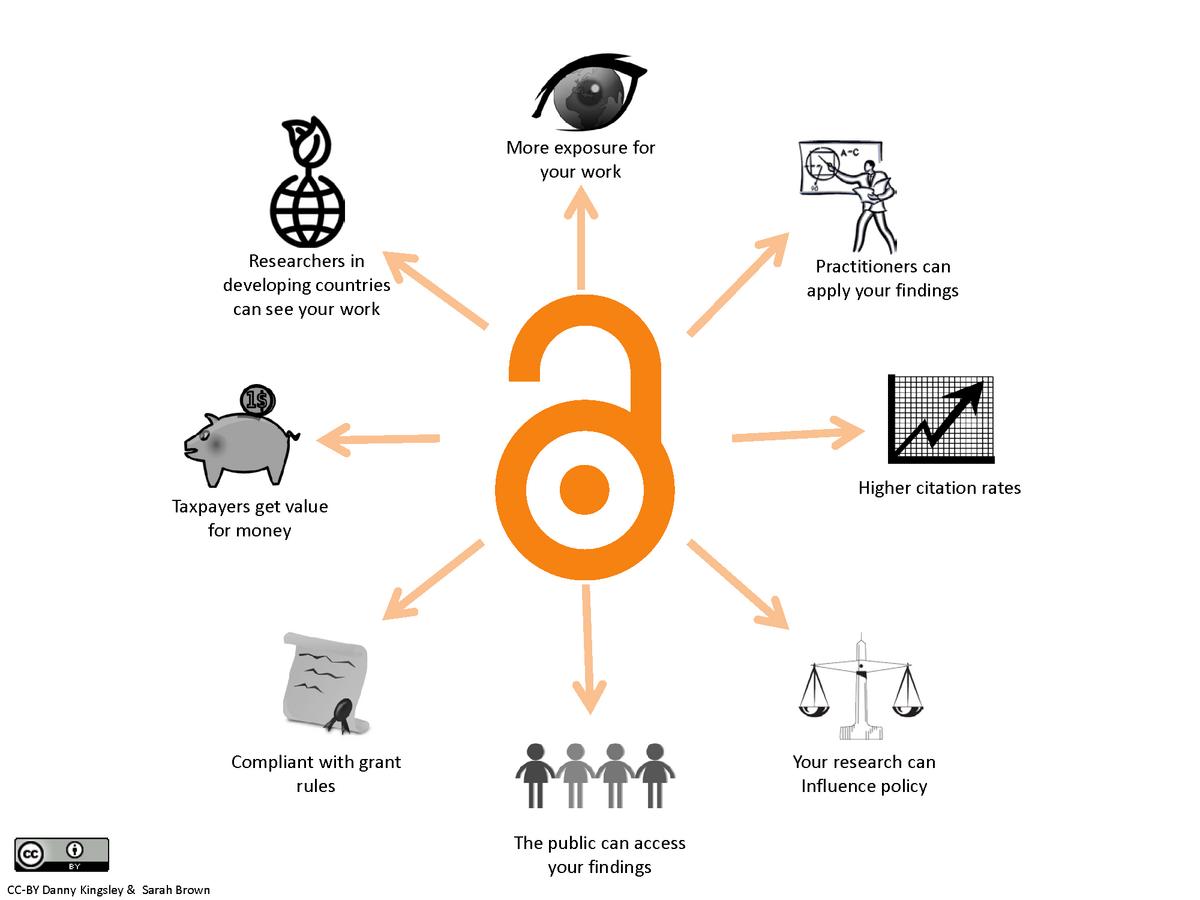Advantages of Open Access
What advantages do you get with Open Access?
With Open Access, your research will be freely available to your colleagues, researchers and other interested parties all over the world.
If you choose Open Access, you will get significant benefits for your research:
- Visibility
The potential for more people to see and download your research. New readers could be researchers outside the established research environment or researchers from developing countries. Open Access can contribute to better quality assurance, as research is visible to more people who can assess and cite it. At the same time, it will be more difficult to plagiarize research. - Transparency
Your research integrity is strengthened by the free availability of your research. Especially if you give access to your data and thereby make your research more transparent. This makes your research more credible and allows you to reuse your data for new research projects. - Availability
Free access for all, and not limited by whether the user has a subscription or not. Depending on the circumstances, Open Access publications will be searchable in Google Scholar, Scopus, specialist databases, and so on. Publications uploaded to Pure will for example be available in Research Portal Denmark. - Societal benefits
By publishing Open access, your research lives up to The National Open Access Strategy, which is supported by AU's Open Access policy and which will ensure that everyone has free access to publicly funded research in Denmark. - Interdisciplinary research
By making your research open, you ensure that your research has the best conditions for being able to take part in interdisciplinary research. - Meet the the requirements of funding bodies
Your research lives up to the Open Access demands that foundations increasingly require of research results, and often of the associated data. If you do not meet the requirements for Open Access, you may risk not getting all of your funds allocated. - Potential for more citations
There is no clear answer as to whether you will get more citations by publishing Open Access. But via Open Access publishing, your research becomes more visible, and thus there is a real potential for more citations. - Collaboration partners
If you give other researchers than those you normally work with the opportunity to gain access to your research, it may result in new contacts, which may turn into new collaborative partners. Thus paving the way for spin-offs and new research opportunities.
What problems can there be with Open Access publishing?
It is important to be aware that there may be some reservations if you wish to publish or self-archive/parallel publish via Open Access:
- GDPR and copyright
It is not always possible to give access to all research results. There may be data that must be protected, personal data for example, or data which for other reasons must not be made public. Therefore, not all research results can be open. Follow the principle of making your data as open as possible, as restricted as necessary. - Predatory Journals
Beware of publishers who are only in existence for the financial gain. Choose a publisher you trust and who provides the best platform for your research. - Golden Open Access
Researchers have limited funds to publish under Golden Open Access, and the money for this goes directly to the publishers. Instead, consider Green Open Access, where you self-archive/parallel publish your accepted manuscript in Pure. There are also dedicated Open Access journals where it is free to publish – often called Diamond Open Access. The library can help you find out if this is a possibility for your article. - Benchmarking
If you are considering publishing in an Open Access journal, you may be concerned about whether it has a high Journal Impact Factor. Open Access journals are, however, not synonymous with a low Impact Factor, and the quality is not determined by its accessibility. There is also an increasing focus on measuring quality by parameters other than citations, as described in the San Francisco Declaration on Research Assessment (DORA). An indicator should not stand alone as an exclusive yardstick for research quality, there are various metrics, and new ones are on the way, for example Altmetrics. Read more about journal indicators. - Reduced quality assurance?
With the right handling, Open Access does not need to mean a deterioration of quality. Publishers will still need a peer review process, which ensures the quality and the integrity of research through a critical evaluation. Open Access can even contribute to better quality assurance as more research becomes visible to more people, who can then assess and cite it. At the same time it will become more difficult to plagiarize research.
Experiences with Open Access
Hear four AU researchers talk about their experiences with using Open Access.
Read more about the benefits of Open Access
On SPARC’s website, you can read more about the Advantages of Open Access and Impact Stories, that describe how Open Access can make a difference.
Contact AU Library’s Open Access support
If you have any questions about Open Access, you are very welcome to contact AU Library's Open Access support: oa@kb.dk

